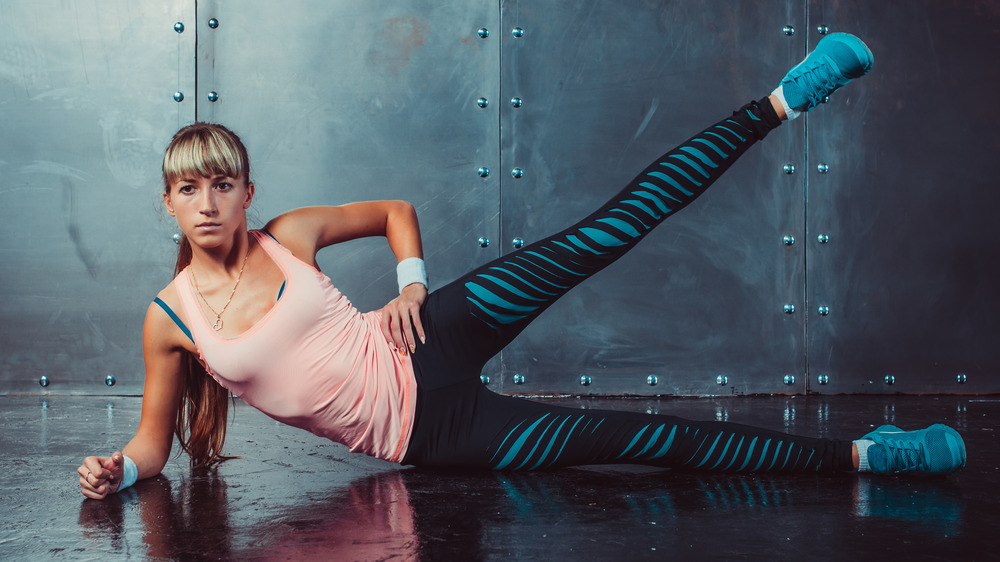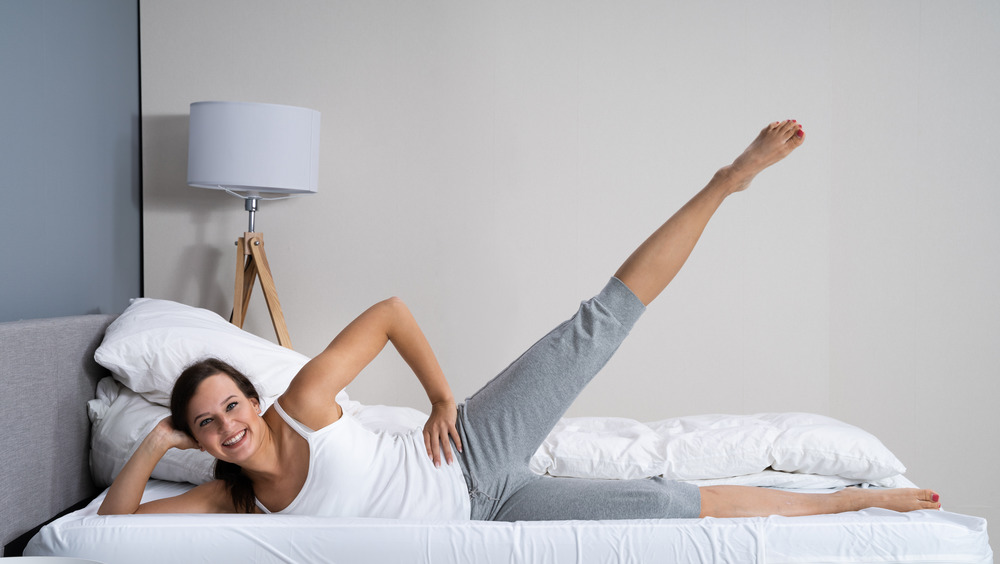Two Different Ways To Try Side Leg Raises
In or out of the gym, body weight exercises are fitness staples. The right combination can target different muscle groups for an intense workout that doesn't use a single piece of equipment, and exercises like the side leg raise target muscle groups that usually get overlooked, making them that much more important when planning a workout.
The thing that sets side leg raises apart is that they work the hip abductors when the leg is pushed away from the center of the body. Hip abductors are a group of muscles that largely go untouched with exercises like squats, crunches, or standard lunges. Curtsy lunges work the muscles, but they are otherwise hard to engage.
And that can be a problem. Hip abductor muscles are responsible for the stability and range of motion in a person's hip. These are key in avoiding injury to the hips and lower body, according to the Strength and Conditioning Journal, the research journal released by the National Strength and Conditioning Association. The journal largely focuses on athletes, but strengthening the hip abductor muscles may be even more important for non-athletes since the muscles are weaker in those who spend most of their day sitting.
How to perform a side leg raise two different ways
There are two ways to perform side leg raises: Standing or laying down (also known as supine). Both work the hip abductors but differ on which additional muscle groups need attention. Standing leg raises balance most of the body's weight on the stationary leg so it is important to focus on balance and leg stability when using this version. Supine, however, requires focus on the abs and back to avoid stress on the lower back.
To perform a standing leg raise, start with feet hip-width apart and hands on your hips. Slowly shift your weight to the stationary leg as you lift the target leg. Try to keep your body upright and your core tight as you lift your leg up and out to the side. You don't have to go very far, only 25 to 30 degrees. Return your foot to the floor and rebalance your weight. Repeat several reps then switch to the other leg.
For the supine leg raise, lay on one side and prop your head up on your palm. Straighten your legs and stack your feet together, then cross your free arm over the chest to brace your hand against the floor. With your core tight and an eye on your lower back to avoid strain, raise your top leg to roughly 45 degrees. Then, return it to the start position, moving slowly to avoid injury. Perform several reps then switch the other side and repeat (via Muscle and Fitness).


